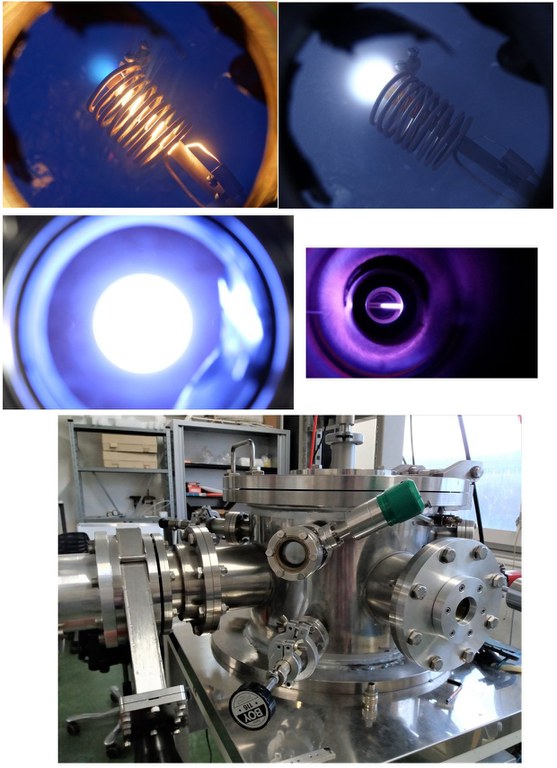Team
TMP-DS
Theory and Modeling of Plasmas - Discharges and Surfaces
Team leader: Tibériu MINEA
Fondamental objectives and applications

Presentation
The TMP-D&S team, led by T. Minea, brings together most of the LPGP's low-pressure plasma research activities. This team has a large number of vacuum plasma reactors for the 'Discharges and Surfaces' (D&S) activities, as well as numerous models of various plasmas for the 'Plasma Theory and Modelling' (TMP) activities.
The scientific studies carried out by the TMP - D&S team concern the physics of discharges and the power deposition mechanisms that enable the ionisation of gases and the reactions generated. These studies are aimed at understanding the mechanisms governing these discharges, enabling plasmas to be mastered and controlled, from the design of new processes to the analysis of plasma deposits. Its work draws on knowledge acquired either through experimental characterisation of the plasma or through modelling and numerical simulations.
The TMP-D&S team's research concerns the production, understanding, improvement and optimisation of cold plasmas, but also the production of charged particles (electrons and ions), as well as active species (metastables, radicals, etc.) in the gas phase or in interaction with surfaces. With the reduction in the dimensions of the plasma (micro-plasma), some work concerns discharges that can operate at atmospheric pressure, while others concern vacuum discharges (without injected gas). Although the research carried out by this team always favours a fundamental approach, it regularly leads to applications such as the deposition of thin films, plasma treatment of polymers, combustion control and the design of new plasma devices and processes. Some of the work is at the interface between cold and hot plasmas, such as research on the ITER project, where cold plasmas are created by very high-energy particles (neutral injector, on-board plasma, etc.), ionising radiation (synchrotron) or very high voltages (MegaVolts).
Fundamental objectives and applications
The aim of our studies is to understand the fundamental mechanisms that enable the ionisation of gases at low pressure and the creation of plasma, either by means of an electrical discharge, or by the interaction of energetic radiation (ions, electrons, photons with a gas), or by the expansion of a gas (vapour) in a vacuum while applying very strong electric fields.
Historically, the TMP-D&S team has studied two types of discharge: magnetron and microwave. However, this knowledge has enabled research to be extended to other discharges such as those generating negative ions, producing charged particles to feed ion or electron sources, metal ion sources, etc. The team has expertise in magnetised plasmas, the transport and extraction of charged or plasma-activated particles (jet of species at low pressure), the ionisation of gases induced by energetic radiation, as well as plasma-surface interaction, surface treatments and Physical Vapour Deposition (PVD) in inert or reactive atmospheres.
More recently, our research has focused on subjects of socio-economic interest, the optimisation of numerous plasma processes and the design of new devices with high innovative potential.
Research topics
The team's plans for the coming years focus on 5 areas of research:
1) Cold plasmas for high energies
• Numerical modelling of the formation of a high-energy particle beam (100 keV - 1 MeV) for ITER & CERN
• Electron emission modelling for ultra-high voltage holding and electron sources
2) Magnetron discharges
• Experimental characterisation of magnetron plasma
• Modeling of magnetron plasma
• Deposition of ultra-thin films and nanoparticles
3) Microwave discharges
• Microwave micro-discharges in fibres and capillaries
• Surface treatment with microwave plasmas
4) Fragmentation and Correlations
• Statistical methods - Molecular fragmentation
• Correlated free quantum systems
5) Additive manufacturing
• Energy source for high-energy additive manufacturing
• Self-consistent 3D modelling of electron beam shaping
